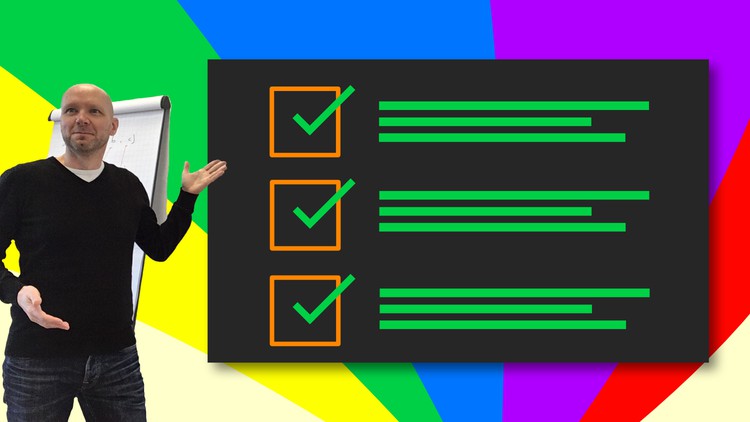
Description
This course teaches developers what they should know about Python lists beyond beginner level. The course aims to solidify and deepen your basic knowledge about lists, tuples, dictionaries and sets to intermediate level. Developers who follow the course, will learn tips and tricks and work through many exercises that allows them to practice common list tasks.
Target audience
Developers who especially benefit from this course, are:
- beginning programmers with ~6 months Python experience who want to take their coding skills to the next level
- developers who bring experience from another programming language and want to learn how to work with lists in Python
- self-taught Python developers who want to improve their list skills by learning best practices
Challenges
Students that are interested in this course often know basic list features but are not yet aware of Python’s unique language features that allows to write more optimized code. This can lead to verbose or slow code. It is my goal to teach you up-to-date, preferred ways to work with lists in Python and make your code readable, predictable and elegant.
What can you do after this course?
- Make better decisions when to use one of the 4 built-in container types by seeing their specific features.
- Work with lists more efficiently by using Python-specific language features like unpacking, slicing and comprehensions.
- Optimize your existing code after learning that Python offers many built-in common list operations.
Topics
- What is a Container? Container definition and the 4 built-in container types in Python.
- Lists: Create and change lists. Accessing elements, reverse, sort, count elements.
- Tuples: Create and unpack, assign, swap variables, tuples as return type.
- Dictionaries: Dictionary purpose, keys, lookup, iterate.
- Sets: Set purpose, mathematical operations, superset, subset.
- Common operations: Zip, enumerate, all, any, concatenate, check if element is in list.
- Slicing: Slice, head, tail, init, last.
- Comprehensions: Mapping, filtering, flatten, matrix.
Duration
2 hours video time, ~6 hours including practicing exercises.
The teacher
This course is taught by Loek van den Ouweland, a senior software engineer with 25 years of professional experience. Loek is the creator of Wunderlist for windows, Microsoft To-do and Mahjong for Windows and loves to teach software engineering.
Who this course is for:
- beginning programmers with ~6 months Python experience who want to take their coding skills to the next level
- developers who bring experience from another programming language and want to learn how to work with lists in Python
- self-taught Python developers who want to improve their list skills by learning best practices
Requirements
- Beginner understanding of programming (calculate, variables, loops) in Python or another language
- You have Python installed and can execute programs
Last Updated 1/2023
Download Links
Direct Download
Python intermediate series – Working with lists.zip (328.4 MB) | Mirror


